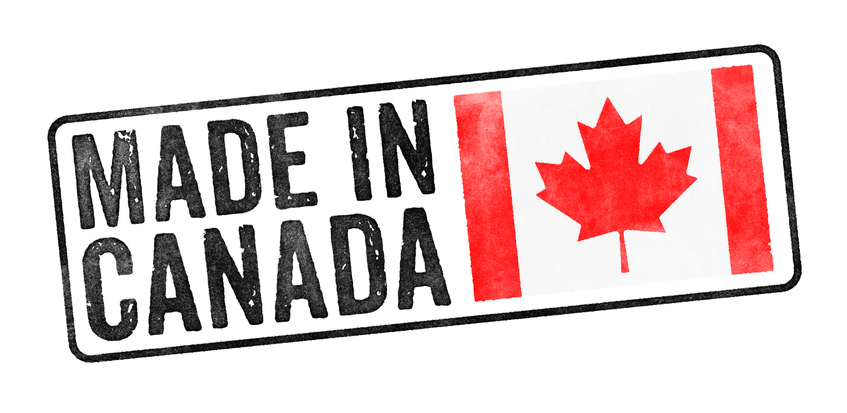For some reason, Canadians have been more eager lately to shop for Canadian-made products. During shopping, shoppers seem to pay more attention to the product label. There are three main categories: “Made in Canada,” “Prepared in Canada,” and “Product of Canada.”
“Made in Canada” is a label that can be applied to products manufactured or processed in Canada. However, this label also requires that the last substantial transformation of the product occurred in Canada. This means that the product must have undergone a significant change in Canada, resulting in a new product or substantially modifying an existing product. For example, suppose raw materials from abroad are used to manufacture a toy in Canada, and the final assembly occurs in Canada. In that case, the toy can be labelled as “Made in Canada”. It’s important to note that to use this label, companies must also include a qualifying statement if a significant amount of the content (typically understood to be 51% or more) comes from outside Canada. Such statements usually read “Made in Canada from imported ingredients” or “Made in Canada from domestic and imported ingredients”, providing clarity on the origin of the components.
“Prepared in Canada” is often used for food products and indicates that the food was prepared and processed in Canada. This label does not necessarily mean that the primary ingredients are Canadian but that the product was packaged and processed in Canada. For example, a soup made using vegetables and meats from different countries but is cooked and canned in Canada can carry the “Prepared in Canada” label. This category is particularly helpful for consumers looking to support Canadian businesses and labour, even if the raw materials are sourced from elsewhere.
“Product of Canada” is perhaps the most stringent of these labels. It indicates that nearly all the content, processing, and labour used in making the product are Canadian. Specifically, the guidelines usually require that at least 98% of the total direct costs of producing or manufacturing the product are incurred in Canada. Additionally, all or virtually all major ingredients, processing, and labour used in making the product must be Canadian. This label is used to reassure consumers that they are buying substantially Canadian products in terms of ingredients, production, and labour. It is most commonly seen in food items where the main ingredients are grown or raised in Canada, and the product is manufactured and packaged within the country.
Beyond the three primary labels of “Made in Canada,” “Prepared in Canada,” and “Product of Canada,” there aren’t many additional official categories specifically endorsed or defined by Canadian regulations for describing the national content or production of goods. However, other related terms and labels can sometimes appear on products.
“Canadian-Owned ” indicates that the company that owns the product or brand is Canadian. This doesn’t necessarily reflect where the product was made or where the materials come from but is more about ownership and where the company’s profits are likely to be taxed.
“Packaged in Canada” is similar to “Prepared in Canada. ” This label indicates that the packaging process took place within Canada, but it does not make any claims about where the product itself was manufactured or where the ingredients were sourced from. It’s primarily focused on the final step in the production process—the packaging—which was done in Canada.
“Assembled in Canada” indicates that while components may have been manufactured elsewhere, the final assembly occurred in Canada. This can apply to a range of products, from electronics to furniture. The degree of assembly required in Canada to justify this label is less than needed for a “Made in Canada” product.
“Designed in Canada” is used for products designed in Canada, but where the actual manufacturing might have been done elsewhere. It highlights the Canadian contribution to the creative process while being transparent that manufacturing may be international.
Now, what about a US pizza franchise operated by Canadians? Is that considered as US or Canadian? A US pizza franchise owned and operated by Canadians can be considered American and Canadian, depending on the perspective one chooses to adopt. Legally and operationally, it is Canadian, but it remains American in terms of branding and corporate identity. This nuanced identity is common in globalised business environments where international brands have local operations, blending cross-border brand appeal with domestic business practices. This blending can offer a unique cultural and economic amalgamation, enriching the local business landscape with global and regional influences.

Leave a Comment